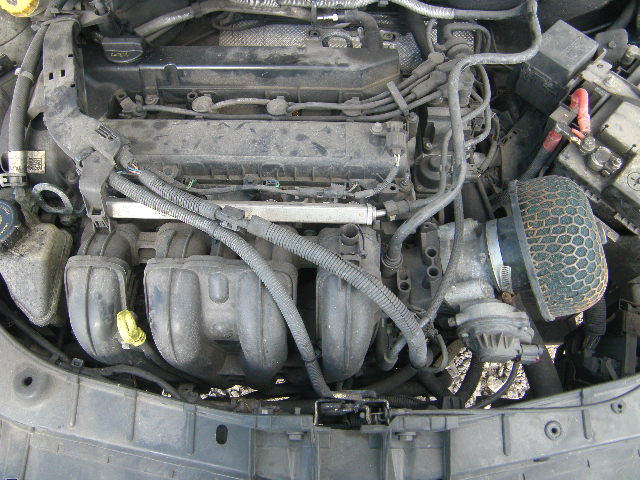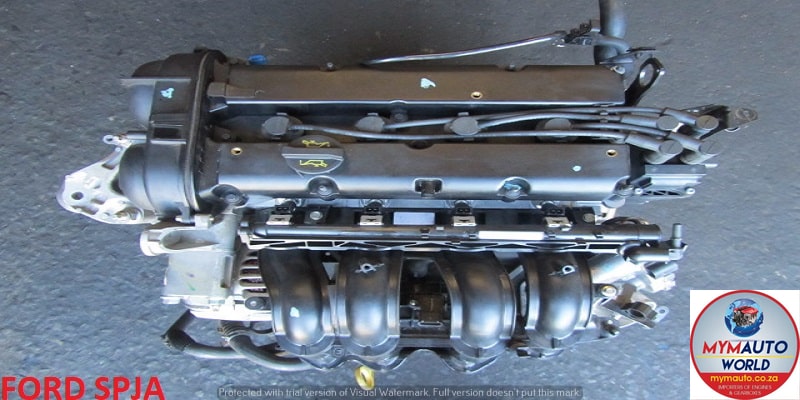Save Money on Repairs with Regular Ford Fiesta Engine Inspections
Save Money on Repairs with Regular Ford Fiesta Engine Inspections
Blog Article
Exploring the Evolution of Engines: From Classic Styles to Modern Marvels
From the first steam engines that powered the Industrial Transformation to the development of interior combustion engines that transformed movement, each phase has added to greater performance and capability. As we take a look at these milestones, one need to consider just how the future of engine style may unravel, testing our perceptions of power and performance.
The Birth of Engine Technology
The arrival of engine innovation marked a zero hour in human innovation, transforming energy conversion and transport. The earliest engines emerged from the demand to harness mechanical power for practical use, leading to the development of devices that converted various power kinds right into motion. The idea of the engine can be traced back to ancient worlds, where simple devices, such as the waterwheel and windmill, used natural forces to do work. It was during the late 17th and early 18th centuries that substantial improvements started to appear.
The advancement of the internal combustion engine and the creation of the steam engine catalyzed a profound shift in commercial capacities. These engines not only enhanced efficiency yet also expanded the scope of human mobility, allowing unprecedented transportation possibilities. The early models laid the foundation for the mechanized world, facilitating the surge of markets and reshaping societal frameworks.
As engine designs advanced, they progressed and incorporated innovative materials design concepts, leading the method for modern-day developments - ford fiesta engine. The birth of engine technology stired up a ruthless pursuit of performance and power, setting the stage for the vibrant evolution of transportation and commercial machinery that would certainly comply with
Heavy Steam Engines and Their Influence

The heavy steam engine's influence was especially obvious in the transportation sector (ford fiesta engine). Steam-powered engines assisted in the quick motion of goods and individuals throughout substantial distances, properly reducing the geographical barriers that had actually previously prevented trade and interaction. Likewise, steamships changed naval traveling, permitting quicker and extra trusted crossings of rivers and seas.
In industry, heavy steam engines powered manufacturing facilities, making it possible for mass manufacturing and the increase of urban facilities as hubs of economic task. Heavy steam modern technology cultivated innovations in design and manufacturing processes, laying the groundwork for future improvements in engine design.
The Rise of Interior Combustion
Regularly outweighing vapor power, the surge of inner burning engines marked a transformative change in transportation and industry during the late 19th and very early 20th centuries. The advancement of these engines, characterized by their capacity to melt gas within the engine itself, enabled higher efficiency and power compared to typical steam engines. Pioneering innovators such as Nikolaus Otto and Rudolf Diesel played essential roles in developing engine designs, resulting in widespread adoption in cars, watercrafts, and industrial machinery.
The internal combustion engine's small dimension and reasonably light-weight nature promoted the emergence of personal automobiles, reinventing specific wheelchair and reshaping metropolitan landscapes. By allowing faster traveling and the effective transport of products, these engines militarized economic growth and promoted globalization. The flexibility of fuel alternatives, including gasoline and diesel, additionally boosted their appeal, enabling for diverse applications across numerous industries.
Regardless of the environmental concerns that would later on occur, the first attraction of internal combustion modern technology stocked its transformative possibility. As society accepted this advancement, the structure was laid for modern-day transportation systems, developing inner combustion engines as a cornerstone of commercial development and day-to-day life throughout the 20th century.
Advancements in Engine Efficiency
As interior combustion engines came to be integral to transport and market, the focus moved in the direction you can look here of boosting their effectiveness to satisfy expanding demands for efficiency and sustainability. Technologies in engine style, material science, and modern technology have actually considerably added to this advancement.
One significant advancement is the advancement of turbocharging, which enables boosted air intake, resulting in more complete fuel combustion and enhanced power result without enlarging engine size. Additionally, variable valve timing systems have been executed to enhance engine performance throughout different RPM varieties, consequently boosting fuel efficiency.
The application of innovative fuel shot modern technologies, such as straight shot, has actually additionally played a critical role. This technique permits even more exact control over the fuel-air mixture, advertising far better combustion and decreasing discharges. Lightweight materials, consisting of light weight aluminum and composite parts, have been adopted to minimize overall engine weight, leading to enhanced performance.
These advancements mirror a wider trend within the vehicle sector, where the synergy in between engineering development and environmental factors to consider drives the recurring pursuit for greater efficiency in interior combustion engines. Therefore, contemporary engines are now more effective, cleaner, and effective than ever, leading the way for an extra lasting future in transport.
The Change to Electric Power
With growing worries over environmental influence and fossil gas dependence, the auto market is experiencing a substantial change towards electric power. This transition is driven by a mix of technical innovations, governing stress, and transforming consumer choices. Electric vehicles (EVs) use a compelling alternative to standard internal burning engines, flaunting lowered greenhouse gas exhausts and lower operating expenses.
The surge of battery innovation has actually been a video game changer, with lithium-ion batteries becoming much more reliable and affordable. Improved power density and faster charging capacities have made EVs much more functional for everyday usage. Additionally, governments worldwide are official site applying incentives and setting ambitious targets for eliminating fossil gas lorries, therefore increasing the fostering of electric power.
As billing infrastructure expands and battery technology continues to boost, the i thought about this shift to electric power is positioned to improve the automotive landscape, promoting sustainability and development in the years to come. The future of transport is electric, and the momentum is indisputable.
Conclusion
The advancement of engine modern technology stands for a significant trajectory of technology that has actually profoundly affected transportation and industry. From the fundamental steam engines to the transformative interior combustion engines, each growth has contributed to enhanced movement and economic development. The existing shift towards electrical power underscores a vital dedication to sustainability, driven by innovations in battery innovation. This recurring development not only reflects transforming social needs yet likewise highlights the possibility for a cleaner and more effective future in engine style.

Report this page